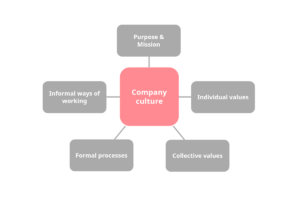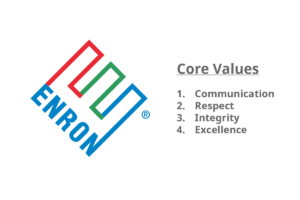In the innovation and HR tech field, one of the common concerns we hear from people is that their culture might not be ready for new practices, processes or tools.
They say their employees simply wouldn’t be ready for the kind of transparency and personal responsibility that are central for virtually all modern collaboration platforms. This might include platforms for employee engagement, idea management or internal communication.
They often continue by saying that unless a culture shift happens prior to introducing these tools or related practices, they would be very likely to fail.
On the other hand, there are also people who see these practices, processes and tools as a way to actually create that change.
Let’s examine both sides of the argument. What does it take to shape culture and successfully introduce change to an organization?
Where Does Culture Come From?
To think about where culture comes from, we must first define what we mean by culture — which isn’t easy since there are probably as many definitions as there are leaders out there, none of which are perfect.
However, my favorite approach is to define culture as the collective way things are done in an organization, especially when the boss isn’t around.
There are a number of factors to consider:
- The larger purpose and mission of the organization.
- The collective values of the organization.
- The personal values of each employee.
- The formal processes and tools used by the organization.
- The informal ways of working within the organization.
Let’s take a brief look at each of these factors.

The Purpose and Mission
Since there’s such a shortage of talent in most industries, talented employees can choose who they work for. This is especially the case for the most respected and influential people in each organization.
More often than not, these influential employees haven’t chosen the organization they work for based purely on factors such as benefits and compensation, as Daniel Pink argues in his book “Drive.” They often work for the organization because they believe in what it’s trying to achieve. Since others in the organization look up to these influential team members, they often follow suit and seek to help the organization achieve its mission, which has a big influence on how people behave.
The Collective Values of the Organization
Most organizations have core values that represent what they believe in. However, the values the organization has chosen and communicates to the outside world might not really reflect how it actually behaves.
A great example of this is the story of Enron. “Respect” and “integrity” were two of its core values, and it had a 65-page ethics manual elaborating how the company was supposed to behave.

However, the people in the organization, starting from the very top, chose not to act according to those values. They acted not based on respect and integrity, but on greed. Employees thus saw that kind of behavior as the way to succeed in the company and replicated it, which eventually led to Enron’s downfall.
So the collective values of your organization matter a lot, and they’re not just words. When your words and actions are at odds, it’s your actions that people will believe in and replicate.
The Personal Values of Employees
Just like the collective values of the organization, the personal values of employees affect behavior. These values can, and often do, also influence other employees.
Over time these individual values shape the larger collective values of the organization, which makes it crucial to choose employees with values that match your desired culture.
As Workday CEO Aneel Bhusri said in a recent episode of the Masters of Scale podcast, having a good fit between candidates’ personal values and your desired culture should always be a key factor in hiring decisions.
The Formal Processes of the Organization
The formal tools, practices and processes used by the organization also have a huge impact on the culture.
If you want your culture to be collaborative but most work and decisions happen individually, it’s quite unlikely that collaboration will thrive. It’s thus crucial that the tools, practices and processes that employees use daily are in line with the culture you want to create.
So if you’re looking to shape your culture to be more innovative, it makes sense to implement practices that encourage employees to innovate, be it via an idea-management process or a practice like Google’s “20 percent time.”
The Informal Ways of Working
If you have a problem with the office printer, the first thing you do probably isn’t to create a support ticket for your IT help desk. Instead you ask Alice for help since she’s the expert on that stuff.
And if it’s too difficult to get approval for new initiatives, the odds are that either you’ll become passive or you’ll find a way to implement the initiative even without permission.
All organizations have thousands of informal ways of working that have gradually become a part of the organization. These informal practices play a huge role in shaping the culture.
How Do You Shape Culture?
If those five factors define culture, how do you shape it?
It’s simple, really. You change those five factors to the direction you want to move and gradually people will adapt to the new norm, which results in the culture changing.
However, “simple” doesn’t necessarily mean “easy.”
Changes in your processes can have unintended consequences. It’s notoriously challenging to change people’s habits and ways of working. Your employees might not embrace the new values until they see management do so. They might even dislike the new values or mission and decide to leave.
There are plenty of practical challenges on actually making cultural change happen. The real question is “Where should we start?”
Which Comes First, the Chicken or the Egg?
Getting back to our original question, there are two basic approaches we can take to driving cultural change:
- Start from the purpose and values.
- Start from the processes, tools and ways of working.
Let’s look at each of them separately.

The Values-Driven Approach
Proponents of the values-driven approach call for clarifying the purpose of the organization and using that to identify core values that are critical for success.
We’ve heard plenty of talk about the importance of purpose and shared values for motivation and for organizational culture, and we’ve seen research to support these findings, such as the Two-Factor Theory.
The Action-Driven Approach
The other side of the argument is that values and a mission alone rarely result in anything concrete, even if people believe in them, unless they’re rooted in how the organization actually works.
Thus, the more vocal proponents of this approach say that changing an organization happens by collectively building new habits to replace the old ones, and that the important thing is to just get started.
Putting It All Together
The bottom line is that the argument between these schools of thought is somewhat artificial and academic. Yes, it’s hard, if not impossible, to act the right way before you have a purpose and a set of reinforcing values. And yes, you’ll never make change happen at large scale with just a purpose and a couple of values. But in real life you need both. You have to think about them together and you have to implement them together.
Just as with strategy and execution, values and actions are fundamentally linked. If the sides aren’t aligned or one side is lacking, failure is usually inevitable.
Of course, cultural change usually doesn’t — and shouldn’t! — mean that you need a 180-degree reversal of everything the organization stands for. It’s simply about making small adjustments to guide you toward achieving your mission.
So the next time you implement a new HR tech solution, ask yourself whether the tool is going to help you in your mission, and whether your culture should be changed to better accommodate the new tool achieve that purpose — and if so, how you plan to achieve that.
Post Views: 3,499